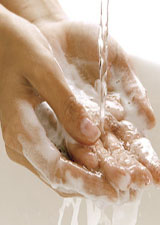
The Westchester County Department of Health has been working with the New York State Department of Health (NYSDOH), the Centers for Disease Control and Prevention (CDC), and hospitals, medical providers, and EMS in the county to prepare for Ebola.
To ensure that every precaution is being taken to protect the public from Ebola, the Health Department:
- Receives the latest Ebola guidance from CDC and is in constant contact with NYSDOH to obtain the most up-to-date procedures and shares this information with the medical community.
- Provides health care workers with current information using email, blast fax, and the Physician’s Corner.
- Updates the website to ensure the most current information is available.
- Coordinates countywide trainings, as needed.
Should a suspect case of Ebola be found in Westchester, the Health Department is ready to respond and will:
- Collaborate with medical providers to identify any suspect case through prompt reporting by hospitals and health care providers.
- Work closely with the reporting agency and the NYSDOH.
- Coordinate safe transport of a suspect case.
- Conduct contact tracing.
- Monitor the use of appropriate isolation measures to ensure that an outbreak does not occur.
Hospitals
Ebola Screening Algorithm for Emergency Department Settings (CDC)
Ebola Screening Algorithm for Ambulatory Care Settings (CDC)
Checklist for Patients Being Evaluated for EVD in the U.S. (CDC)
Temperature monitoring log here (WCDOH)
- Information on the Survivability of the Ebola Virus in Medical Waste (CDC)
- Ambulatory Care Evaluation for patients with possible Ebola (CDC)
- Physicians Corner (WCDH)
- NYSDOH Ebola
- Centers for Disease Control (CDC)
- CDC Guidelines for PPE
- View hands-on demo of how to put on and remove PPE.
Healthcare Workers
Ebola Screening Algorithm for Emergency Department Settings (CDC)
Ebola Screening Algorithm for Ambulatory Care Settings (CDC)
Checklist for Patients Being Evaluated for EVD in the U.S. (CDC)
Temperature monitoring log here (WCDOH)
- Guidance on Personal Protective Equipment (PPE) To Be Used By Healthcare Workers during Management of Patients with Confirmed Ebola or Persons under Investigation (PUIs) for Ebola who are Clinically Unstable or Have Bleeding, Vomiting, or Diarrhea in U.S. Hospitals, Including Procedures for Donning and Doffing PPE (CDC 10/13/2022)
- Information on the Survivability of the Ebola Virus in Medical Waste (CDC)
- Ambulatory Care Evaluation for patients with possible Ebola (CDC)
- Physicians Corner (WCDH)
- NYSDOH Ebola
- Centers for Disease Control (CDC)
- CDC Guidelines for PPE
- View hands-on demo of how to put on and remove PPE.
EMS Providers
- Physicians Corner (WCDH)
- NYSDOH Ebola
- Centers for Disease Control (CDC)
- CDC Guidelines for PPE
- View hands-on demo of how to put on and remove PPE.
- Information about Ebola for EMS agencies (NYSDOH)
Residents
- Cleaning and decontamination of Ebola on Surfaces fact sheet (OSHA) (three pages)
Schools and Colleges
- Guidance on the Ebola outbreak (NYSED)

Norovirus is a highly contagious virus that causes severe stomach pain, vomiting and diarrhea.
It is the most common cause of foodborne-disease outbreaks in the US.
The loss of fluids from vomiting and diarrhea can lead to severe dehydration, especially among more vulnerable people.
Every year in the US:
- About 1 out of 15 people contract norovirus
- More than 70,000 people are hospitalized due to norovirus
- Around 600-800 people die from norovirus
How does it spread?
- Norovirus is transmitted when an infected person doesn’t wash their hands properly and comes in contact with others.
- The virus is shed in stool and vomit; so if an infected person doesn’t wash their hands after being ill or using the toilet they can easily spread it to other people.
- Norovirus can live on surfaces for up to two weeks. A person can contract norovirus by touching a contaminated surface (such as a doorknob or light switch) and then touching their mouth, nose or eyes.
How is it treated?
- There is no treatment or vaccine for norovirus, so prevention is key.
- It is important to drink plenty of fluids, including oral rehydration fluids, to prevent dehydration.
- Most people with norovirus get better in 1-3 days
 How to prevent Norovirus infection?
How to prevent Norovirus infection?
- Wash your hands—do not use alcohol based hand sanitizers as they are not effective against norovirus.
- Stay home when you are sick and return to work only when you have been symptom-free for at least 48 hours. Food handlers, childcare workers, and healthcare workers should stay home for 72 hours after symptoms resolve.
- Wash your fruits and vegetables thoroughly.
- Clean and disinfect contaminated surfaces.
- Separate contaminated clothing/linens when washing.
- Wear gloves while cleaning bodily fluids and doing laundry.
Quick cleaning tips:
- Disinfect contaminated surfaces with a bleach solution—use 1/3 cup bleach per gallon of water.
- Do NOT use green cleaners, as they do not kill norovirus.
- NEVER use a wetvac to clean up vomit or bodily fluids—the wetvac spreads contaminants.
- Wear gloves
More information:
Flyers/Posters
